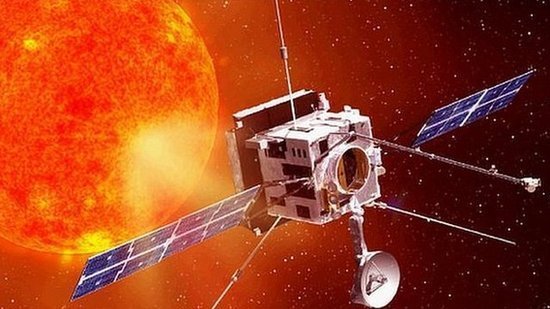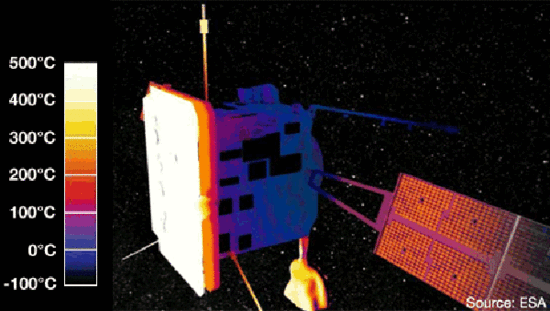The British Industry Federation will lead the production of the Solar Orbiting Satellite (SolO), which will be closer to the Sun than any other satellite of its history. SolO will take photos and measurements inside Mercury's orbit to get new data to explore what brings the sun's dynamic behavior.

Ralph Kerddy of British Space Corporation explained how to build a spacecraft that can survive in the solar mission.

Solar Satellite needs a multi-layer heat shield for protection
The European Space Agency has signed a contract with British Airways to form the satellite and plans to launch it in 2017. The value of this agreement is 300 million euros (2.45 billion U.S. dollars), which makes it one of the largest contracts signed by the European Space Agency in the United Kingdom.
Looking back at history, the date of signing of this legal document is in line with the 50th anniversary of British space activities. April 26, 1962 was the day when the British Antelope 1 satellite was launched and it was also a day for the United Kingdom to become a country to explore space. Alvaro Jimenez, head of the European Space Agency, and Miranda Mills, manager of the space company, signed a handshake at the SolO project at the Science Museum in London. An Antelope 1 satellite model is being displayed here.
After launch, the orbiting satellites will send themselves into the solar system and fly to 42 million kilometers from the sun. This close contact requires it to carry a strong protective shield. Dr. Ralph Kerdde, Technical Director of British Aerospace Corporation, said: “High temperatures are a huge problem. If this satellite is not protected, it will actually reach 500 degrees Celsius, which will be disastrous. We will use one. Thick insulation boards reduce the temperature inside the spacecraft, and its system temperature will drop to room temperature to ensure that all electronic equipment can work properly."
SolO's remote sensing instruments, imagers, and telescopes will be observed through narrow passageways, and shutters on the passage will close when observations cease. The purpose of this mission is to help us better understand how the sun affects the environment around it, and especially how it forms and accelerates the flow of charged particles. This solar wind will be violent and large explosions on the surface of the sun will cause large disturbances in the solar wind. When this stream of particles hits the atmosphere of the Earth and other planets, it triggers spectacular aurora scenes.
Dr. Lucy Greene, a solar physicist at University College London, explained: “The solar orbit satellite mission will tell us how the sun creates the heliosphere, which is what you think of the solar atmosphere. The heliosphere is very hot and can diffuse into space. The scope of 17 billion kilometers. In fact, we do not understand how it is formed and how it changes over time, but the solar orbit satellites will really go deep into the atmosphere to observe which area of ​​the solar surface the emissions are coming from. Understand how a huge bubble came about."
The Solar Orbits satellite has five instruments that will sample when the solar wind blows from the surface. The orbit of the satellite will also exceed the plane of the sun to observe certain phenomena occurring at its pole position. And the speed with which SolO orbits the sun means that it will be able to track events and features that the Earth Observatory could not observe due to its rotation.
More space exploration missions
At the core of the courage is the desire to better understand what solar physicists call the "space climate." The huge storm on the Sun has thrown hundreds of millions of metric tons of charged particles into space. They can interfere with the Earth’s electromagnetic field, cause communication interference, and in rare cases can damage transmission lines and satellite electronic equipment. Scientists want to be able to predict such events earlier and more confidently.
The solar orbit satellite is a cooperation project between the European Space Agency and NASA. NASA will provide a device, a sensor, and a rocket that will send the satellite into space. This project came from a competition of European space scientists to find a most promising launch mission and launch a possible launch at the end of the decade.
The European Space Agency will soon sign a second mission called Euclid to investigate the mysterious phenomenon of the famous dark energy and dark matter that seems to rule and form the universe we observe through telescopes.
The first new level of large-scale missions (those that cost more than one billion dollars) will be set next week, which is expected to be to explore Jupiter's icy satellites. (passenger/compile)
Single Wave Washer,Single-Layer Wave Springs,Nested Wave Spring,Multi-Layer Standard Wave Springs
Ningbo FLK Technology Co., Ltd. , https://www.flk-global.com